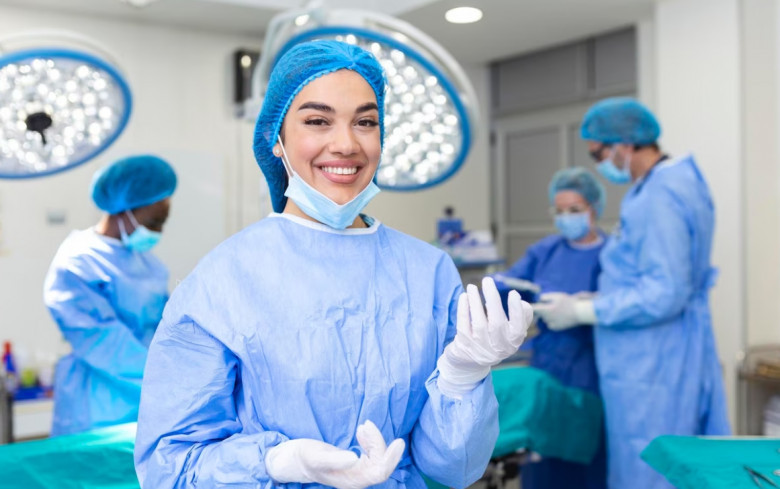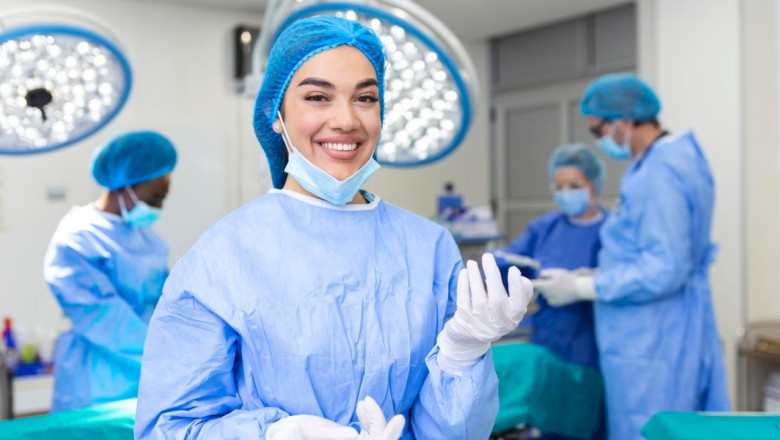views
Surgical scrubs are specialized uniforms worn by healthcare professionals, especially in surgical and sterile environments. They are designed for cleanliness, comfort, and function. Typically made from lightweight, breathable fabric, surgical scrubs help maintain hygiene while allowing medical personnel to move freely and work efficiently. Their design includes short sleeves, V-neck tops, and drawstring or elastic waist pants, ensuring a practical and professional appearance in medical settings
Importance of Surgical Scrubs in Medical Environments
Surgical scrubs play a critical role in maintaining a sterile environment inside hospitals and surgical rooms. They minimize the risk of infections by reducing the transmission of pathogens. When healthcare professionals wear clean surgical scrubs, they protect both themselves and their patients from contaminants. Additionally, wearing scrubs allows easy identification of medical staff and promotes uniformity, which is essential during emergencies and high-pressure situations
Types of Surgical Scrubs
There are different types of surgical scrubs designed for various roles within healthcare facilities. Traditional scrubs are usually basic and functional, suitable for general medical staff. Antimicrobial scrubs come with added protection against bacteria and are ideal for operating rooms. Disposable surgical scrubs are used in highly sensitive surgical procedures and discarded after one-time use. Reversible scrubs offer convenience in fast-paced environments, as they can be worn inside out in urgent situations. Custom-designed scrubs with color-coding or embroidered names help differentiate roles, departments, or ranks within medical teams
Features to Look for in High-Quality Surgical Scrubs
Comfort and durability are key features of quality surgical scrubs. Medical professionals often work long shifts, so scrubs must be made from soft, breathable materials that are easy to move in. Look for scrubs with reinforced stitching to withstand frequent washing and wear. Moisture-wicking fabrics are also important, especially in high-stress environments. Pockets are a vital feature, allowing healthcare workers to carry tools, pens, and personal items easily. Some modern scrubs even include stretch panels for improved fit and flexibility. Color retention, stain resistance, and shrink-proof qualities also ensure the scrubs stay professional-looking after repeated laundering
Why Hospitals Standardize Surgical Scrubs
Hospitals and clinics often require staff to wear standardized surgical scrubs to maintain uniformity, reduce contamination risks, and enhance safety. Standardization ensures that all personnel are equally protected and helps maintain sterile zones effectively. It also simplifies laundry management and inventory control. By using color-coded scrubs, hospitals can easily distinguish between different departments or job roles, increasing coordination and minimizing confusion during emergencies. This system also reassures patients, allowing them to recognize healthcare providers instantly and feel more confident about the care they receive
The Growing Demand for Stylish Surgical Scrubs
Modern healthcare professionals are now seeking surgical scrubs In Australia that combine function with fashion. The demand for stylish, tailored scrubs has increased, especially among younger generations of nurses, surgeons, and medical assistants. Brands now offer scrubs in various colors, prints, and fits while maintaining medical-grade quality. This shift towards fashionable scrubs not only boosts morale but also allows healthcare workers to express their personality while maintaining a professional look. As a result, the surgical scrubs market is seeing innovation in fabric technology, design aesthetics, and personalized features to meet evolving preferences in the medical field














Comments
0 comment